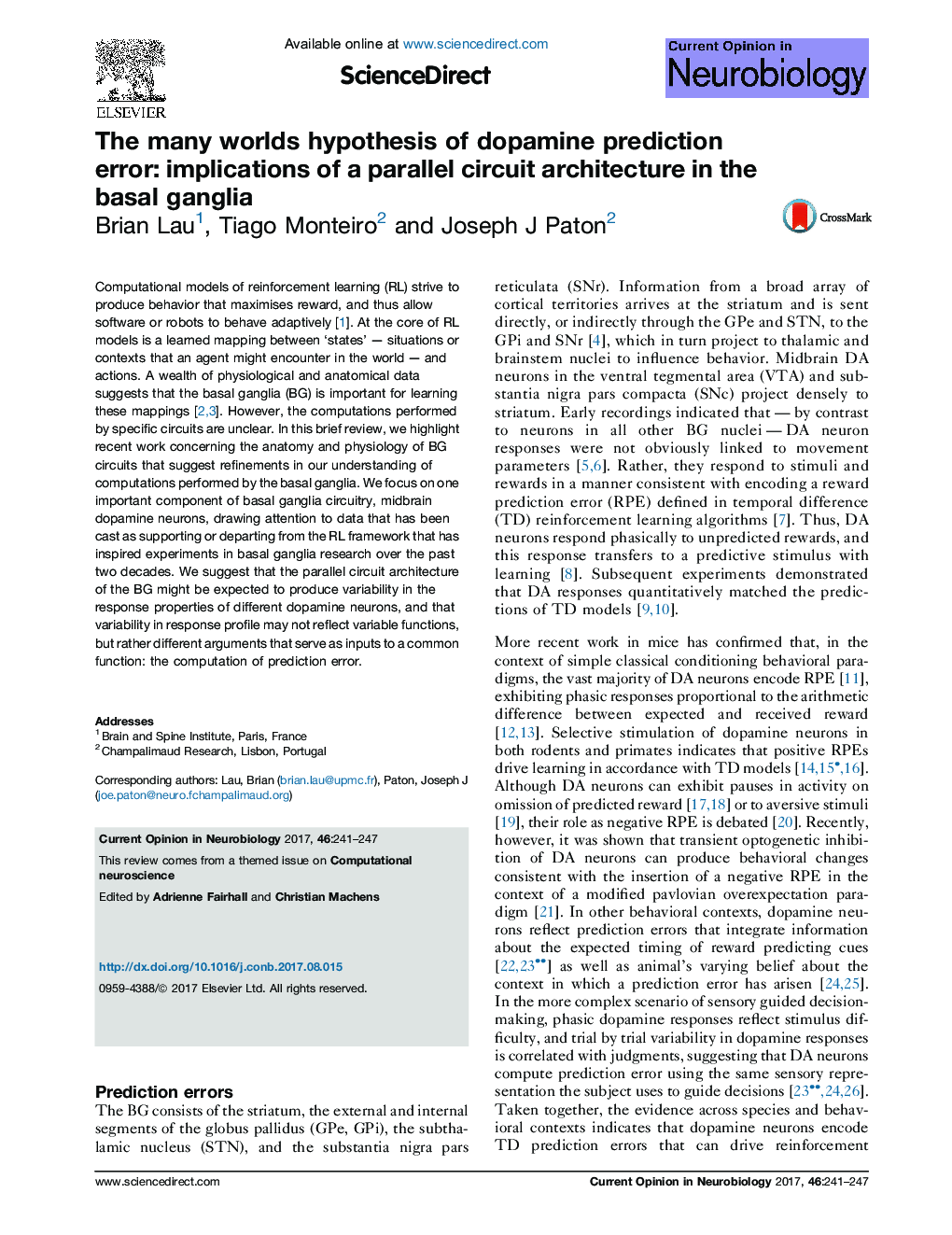| کد مقاله | کد نشریه | سال انتشار | مقاله انگلیسی | نسخه تمام متن |
|---|---|---|---|---|
| 5736992 | 1614503 | 2017 | 7 صفحه PDF | دانلود رایگان |
عنوان انگلیسی مقاله ISI
The many worlds hypothesis of dopamine prediction error: implications of a parallel circuit architecture in the basal ganglia
ترجمه فارسی عنوان
فرضیه های بسیاری در مورد خطای پیش بینی دوپامین: پیامدهای یک معماری مدار موازی در گانگلیس پایه
دانلود مقاله + سفارش ترجمه
دانلود مقاله ISI انگلیسی
رایگان برای ایرانیان
موضوعات مرتبط
علوم زیستی و بیوفناوری
علم عصب شناسی
علوم اعصاب (عمومی)
چکیده انگلیسی
Computational models of reinforcement learning (RL) strive to produce behavior that maximises reward, and thus allow software or robots to behave adaptively [1]. At the core of RL models is a learned mapping between 'states' - situations or contexts that an agent might encounter in the world - and actions. A wealth of physiological and anatomical data suggests that the basal ganglia (BG) is important for learning these mappings [2,3]. However, the computations performed by specific circuits are unclear. In this brief review, we highlight recent work concerning the anatomy and physiology of BG circuits that suggest refinements in our understanding of computations performed by the basal ganglia. We focus on one important component of basal ganglia circuitry, midbrain dopamine neurons, drawing attention to data that has been cast as supporting or departing from the RL framework that has inspired experiments in basal ganglia research over the past two decades. We suggest that the parallel circuit architecture of the BG might be expected to produce variability in the response properties of different dopamine neurons, and that variability in response profile may not reflect variable functions, but rather different arguments that serve as inputs to a common function: the computation of prediction error.
ناشر
Database: Elsevier - ScienceDirect (ساینس دایرکت)
Journal: Current Opinion in Neurobiology - Volume 46, October 2017, Pages 241-247
Journal: Current Opinion in Neurobiology - Volume 46, October 2017, Pages 241-247
نویسندگان
Brian Lau, Tiago Monteiro, Joseph J Paton,
